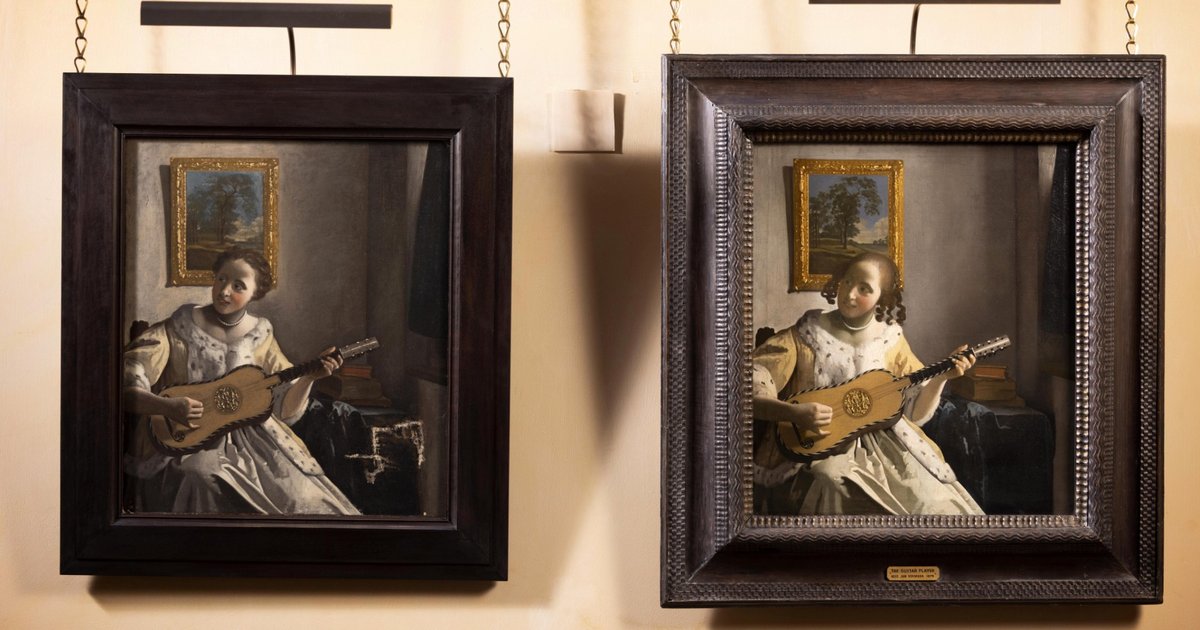A painting owned by the Philly art museum is nearly identical to a Vermeer. Now, they’re hanging side by side
By Molly McVety
Copyright phillyvoice

In 1933, the Philadelphia Museum of Art acquired a painting that previously had been believed to have been painted by Johannes Vermeer. There was one, major problem: The discovery of a nearly identical painting in London six years earlier had cast doubt on that belief.
Art historians have spent nearly a century analyzing the two paintings, determining the London painting, “The Guitar Player,” to be the original. But the artist behind the Philadelphia version, “Lady with a Guitar,” and the reason for its existence remain a mystery.
For the first time, the paintings are being displayed side-by-side at London’s Kenwood House as part of the exhibit Double Vision: Vermeer at Kenwood, which runs until Jan. 11. The Philadelphia Museum of Art had kept its painting in storage until loaning it to the Kenwood House for the exhibit.
“The Guitar Player,” believed to have been painted by Vermeer between 1670-1672, and “Lady with a Guitar,” the Philadelphia version with unknown origins, each depict a seated young woman playing a guitar as natural light shines from a window on the right side. A landscape painting in a gold frame hangs from the wall and a stack of books sits on an end table.
Despite the similarities, the paintings have distinct differences. Most noticeably, the London version depicts the woman with exaggerated ringlets in her hair; in the Philly version, her hair is up. Philly’s painting, estimated to have been painted between 1675 and 1725, shows more subdued coloring and intense shading, while London’s painting is in noticeably better condition and, perhaps most importantly, displays Vermeer’s signature at the bottom.
“For many years, it was thought that the Philadelphia painting was a copy … maybe an outright forgery,” said Jennifer Thompson, curator of European art at the Philadelphia Museum of Art. “But, both of them, up to a certain point, have the exact same history. … So this starts what’s been essentially a century of debate.”
Vermeer, a Dutch painter who lived from 1632 to 1675, was not an extraordinarily prolific artist for his time. Only 37 of his paintings are known to survive. His innovative use of texture and light only earned him recognition years after his death.
“There’s so much interest in Vermeer, because we know so little about him,” Thompson said. “He is only referenced in a handful of documents. There’s very little that’s known about his practice.”
Over the decades, art historians, conservators and scientists have analyzed the composition of the two paintings, their canvases, the materials used and the images depicted.
According to English Heritage, which manages Kenwood House, experts studied the history of Dutch hairstyles, noticing that the ringlets depicted in the London painting stopped appearing in Italian paintings around 1675 and in Dutch paintings around 1700.
The shades of blue used in the background’s landscape portrait also differ. In the London version, Vermeer used ultramarine — the most expensive pigment available at the time. The Philadelphia version uses an indigo shade that was less pricey and more commonly used.
For at least two years, experts from the Philadelphia Museum of Art, the National Gallery of Art in Washington, the National Gallery of Art in London and English Heritage have met over Zoom every few weeks to share new observations and thoughts about the pieces.
“Maybe the Philadelphia picture isn’t by Vermeer, but it’s by someone who knew a bit about how he worked,” Thompson said. “What does that mean? Does that suddenly mean someone was working with him? It sparks other conversations and there’s always more archival work to be done.”
Two years ago, a scholar suggested that Vermeer was the artist behind both paintings. Arie Wallert, a former specialist at the Rijksmuseum in The Netherlands, argued that Vermeer used the same drawing to paint both pictures, saying his analysis of the Philadelphia version revealed traces of ultramarine and lead-tin yellow, a combo that no one else used at the time.
Thompson, however, remains skeptical of this theory, calling the chances “very remote,” because the Philadelphia version is, at the earliest, estimated to have been painted in the year of Vermeer’s death.
An analysis of how the paint on each painting is layered is expected to be completed by next spring. The preliminary results, Thompson said, suggest some portions of the paintings have nearly identical paint layerings, but the differences could shed light onto how colors were being mixed and date the artwork more accurately.
“Through the run of the exhibition, there will be more opinions, more evidence and more people’s thoughts,” Thompson said. “We’re pretty excited about this opportunity and the conclusion of our data processing and how that shifts our thoughts on the Philadelphia picture.”



